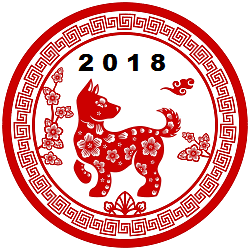
by logisticsplus | Feb 6, 2018 | News
 Chinese New Year is the first day of the year in the Chinese calendar. Chinese New Year is also known as the Spring Festival in modern China, or simply the Lunar New Year, is the most important and longest of all Chinese holidays. The first day of the Chinese New Year 2018, the year of the dog will be celebrated Thursday, February 15, 2018, until February 21, 2018. As you might imagine, given the prominence of Chinese global commerce, the holiday has a huge impact on global supply chains around the world.
Chinese New Year is the first day of the year in the Chinese calendar. Chinese New Year is also known as the Spring Festival in modern China, or simply the Lunar New Year, is the most important and longest of all Chinese holidays. The first day of the Chinese New Year 2018, the year of the dog will be celebrated Thursday, February 15, 2018, until February 21, 2018. As you might imagine, given the prominence of Chinese global commerce, the holiday has a huge impact on global supply chains around the world.
Government, construction, and factories are generally closed for most of the Spring Festival (including the Logistics Plus offices in China), while ports and customs usually operate with a skeleton staff focusing on perishable priority items. Many manufacturers treat the holiday as an annual break and will subsequently shut down for two weeks or longer. With this year’s holiday falling a full 19 days later than it did in 2017, the 2018 Chinese New Year will be different, with normal freight flows resuming in mid-to-late March, according to John Paul Hampstead, staff writer for FreightWaves.com.
If you have Chinese imports or exports, hopefully, you have already planned ahead for this annual supply chain disruption (most suppliers have probably already stopped accepting orders until after the holiday). Different manufacturers might have different schedules, so it is best to coordinate individually with each of your overseas suppliers. Planning and coordination are key to ensuring your supply chain continues to run smoothly before, during, and after the Chinese New Year.
If you need help shifting your supply chain back into high-gear following the Chinese New Year, the global import & export experts at Logistics Plus are here to help. As a top freight forwarder and NVOCC, we can help you secure affordable air freight and ocean freight transportation, and we can provide you with customs brokerage and global trade compliance support. Shipping documents (e.g., BOL entry, arrival notice, custom filings), tariff filings, VGM submissions, cargo tracking, freight rate management, and more – we’ve got you covered! Once your goods arrive in the U.S., we can provide warehousing and fulfillment, and transportation solutions as needed too. Contact us today!

PS: As a reminder, Logistics Plus China offices will also be closed from February 15 through February 21 for the holiday. Those offices will resume normal operations on February 22. During that time period, all other Logistics Plus locations stand ready to help you with your international shipping needs.
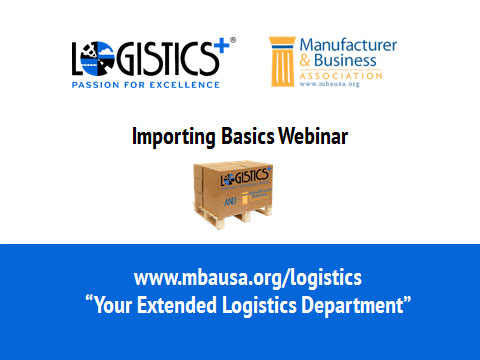
by logisticsplus | Aug 16, 2017 | News
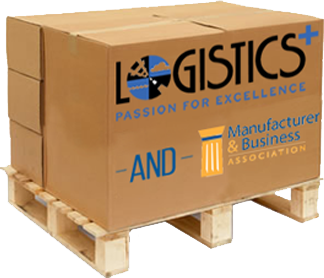 Logistics Plus recently recorded two new webinars as part of its ongoing series of complimentary logistics-related webinars for the Manufacturer & Business Association (MBA) and its members. The two new webinars are focused on Importing Basics and Exporting Basics. Although these webinars are prepared for the benefit of MBA members, the informational content is appropriate for any business that is, or will be, importing or exporting products. Past webinars cover additional transportation and logistics topics. Logistics Plus is the company that manages the MBA Logistics Program. You can learn more about the program at www.mbausa.org/logistics.
Logistics Plus recently recorded two new webinars as part of its ongoing series of complimentary logistics-related webinars for the Manufacturer & Business Association (MBA) and its members. The two new webinars are focused on Importing Basics and Exporting Basics. Although these webinars are prepared for the benefit of MBA members, the informational content is appropriate for any business that is, or will be, importing or exporting products. Past webinars cover additional transportation and logistics topics. Logistics Plus is the company that manages the MBA Logistics Program. You can learn more about the program at www.mbausa.org/logistics.
Importing Basics:
Exporting Basics:
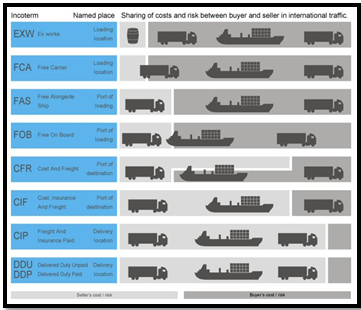
by Marketing | Jul 11, 2017 | News
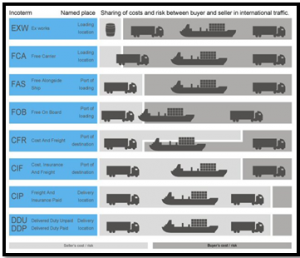 Incoterms® is an abbreviation for “International Commercial Terms.” This term represents a very useful way of communication and it’s actually aimed at reducing confusion between buyers and sellers.
Incoterms® is an abbreviation for “International Commercial Terms.” This term represents a very useful way of communication and it’s actually aimed at reducing confusion between buyers and sellers.
So what is an incoterm? An incoterm represents a universal term that defines a transaction between importer and exporter so that both parties understand the tasks, costs, risks, and responsibilities, as well as the logistics and transportation management from the exit of the product to the reception by the importing country. Incoterms are all the possible ways of distributing responsibilities and obligations between two parties. It is important for the buyer and seller to pre-define the responsibilities and obligations for the transport of the goods.
Here are the main responsibilities and obligations:
- Point of delivery: here, the incoterms defines the point of change of hands from seller to buyer.
- Transportation costs: here, the incoterms define who pays for whichever transportation is required.
- Export and import formalities: here, incoterms define which party arranges for import and export formalities.
- Insurance cost: here, incoterms define who takes charge of the insurance cost.
Advantages of using incoterms:
- As they stand today, there are 11 main terms and a number of secondary terms that help buyers and sellers communicate the provisions of a contract in a clearer way; therefore, reducing the risk of misinterpretation by one of the parties.
- Incoterms govern everything from transportation costs, insurance to liabilities. They contribute to answering questions such as “When will the delivery be completed?” “What are the modalities and conditions for transportation?” and “How do you ensure one party that the other has met the established standards? Having said that, it is important to remember that there are also limits to Incoterms. For example, they do not apply to contractual rights and obligations that do not have to do with deliveries. Neither do they define solutions for breach of contract.
Here’s what you should know about incoterms:
- Ex Works (EXW) – The seller makes the goods available at its location, so the buyer can take over all the transportation costs and also bears the risks of bringing the goods to their final destination.
- Free Carrier (FCA) – The seller hands over the goods into the disposal of the first carrier. After the buyer takes over all the costs, the risk passes when the goods are handed over to the first carrier.
- Free Alongside Ship (FAS) – The seller must place the goods alongside the ship at the named port, the risk of loss or damage to the goods passes when the goods are alongside the ship, and the buyer bears all the costs from that moment on.
- Free on Board (FOB) –The seller must load the goods on board of the ship, nominated by the buyer. Cost and risk are divided when the goods are actually on board.
- Cost and Freight (CFR) –Seller must pay the costs and freight to bring the goods to the port of destination. Although the risk is transferred to the buyer when the goods are loaded on the ship.
- Cost, Insurance and Freight (CIF) –It’s exactly like CFR except that the seller must in addition procure and pay for the insurance.
- Carrier and Insurance Paid to (CIP) –The seller pays for the carriage and insurance to the named destination point, but risk passes when the goods are handed over to the first carrier.
- Delivered Duty Paid (DDP) –The seller is responsible for delivering the goods to the named place in the country of the buyer, and pays all costs in bringing the goods to the destination.
You will find a handy Incoterms 2010 Quick Reference Guide on the Logistics Plus website. Additionally, you can check out our short Introduction to Incoterms 2010 Webinar online.


by Marketing | Jun 6, 2017 | News
 Shipping between the U.S. and Mexico is not as easy as it may seem. In order to transport shipments between these countries, there are certain regulations and documents that must be legally followed. The most common methods of shipping goods from the United States to Mexico are by truck, rail, air and sea, or a mixture of two or more of these transportation modes.
Shipping between the U.S. and Mexico is not as easy as it may seem. In order to transport shipments between these countries, there are certain regulations and documents that must be legally followed. The most common methods of shipping goods from the United States to Mexico are by truck, rail, air and sea, or a mixture of two or more of these transportation modes.
Here’s what you need to know when you’re shipping from the U.S. to Mexico:
- An American carrier will transport your cargo to the border and deliver it to the designated carrier who has been selected / hired by the Mexican consignee (the recipient of his goods).
- The carrier receives your shipment, inspects the cargo, checks all documents and prepares the shipment to enter Mexico on behalf of the Mexican customs agent who is handling your shipment.
- The Mexican customs agent will formally present the Mexican customs entry on behalf of the Mexican consignee.
- Now it’s time for your cargo to cross the border! A third party transportation company will ship your shipment across the border, through customs, and then deliver it to the selected Mexican carrier’s facility.
- Finally, the Mexican carrier transports its cargo inland to its final destination in Mexico, the consignee
Here’s what you need to know when you’re shipping from Mexico to the U.S:
- A Mexican carrier transports its cargo to the border city.
- A Mexican customs agent formally presents the entry of the Mexican export customs on behalf of the Mexican sender so that the goods can legally leave the country.
- A licensed U.S. customs agent then files the U.S. customs clearance so that the shipment can enter the U.S. on behalf of the U.S. importer of record (the consignee).
- A third party transportation company will ship your shipment across the border, through the U.S. Customs, and deliver the shipment to the selected U.S. carrier’s premises.
- The U.S. carrier transports the freight to the final destination.
Here are the basic import and export documents you’ll need:
- Import /export form
- Commercial invoice
- Bill of lading
- NAFTA Certificate of Origin (only if goods qualify for NAFTA)
Every country has its own regulations and shipping requirements so it’s important to be aware of this information before shipping to any country. Contact our team of cross-border experts here at Logistics Plus to learn more about shipping between the U.S and Mexico.

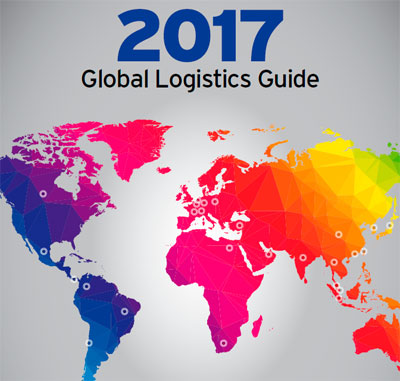
by logisticsplus | Apr 13, 2017 | News
 The folks at Inbound Logistics magazine published their 13th annual Global Logistics Guide in the March 2017 issue. You can also read the full report online. As part of the report, Inbound Logistics ranks major foreign countries according to the following criteria:
The folks at Inbound Logistics magazine published their 13th annual Global Logistics Guide in the March 2017 issue. You can also read the full report online. As part of the report, Inbound Logistics ranks major foreign countries according to the following criteria:
- Transportation infrastructure (T)
- IT competency (I);
- Business culture (B); and
- Intangibles (X).
For your benefit, we have summarized the Inbound Logistics rankings below (10 is the highest score and 3 is the lowest):
| Region |
Country |
Overall |
T |
I |
B |
X |
| Europe |
Netherlands |
10 |
4 |
3 |
3 |
0 |
| Europe |
Germany |
9 |
4 |
3 |
2 |
0 |
| ME/Africa |
UAE |
9 |
4 |
2 |
2 |
1 |
| SE Asia/India |
Singapore |
9 |
4 |
3 |
2 |
0 |
| Europe |
Switzerland |
8 |
3 |
3 |
2 |
0 |
| Asia |
Hong Kong |
8 |
3 |
3 |
2 |
0 |
| Asia |
Japan |
8 |
3 |
3 |
2 |
0 |
| Americas |
Canada |
7 |
2 |
3 |
3 |
-1 |
| Americas |
Panama |
7 |
3 |
1 |
2 |
1 |
| Europe |
France |
7 |
3 |
2 |
2 |
0 |
| Europe |
Belgium |
7 |
3 |
2 |
2 |
0 |
| SE Asia/India |
Malaysia |
7 |
3 |
2 |
2 |
0 |
| SE Asia/India |
India |
7 |
2 |
1 |
2 |
2 |
| SE Asia/India |
Taiwan |
7 |
3 |
3 |
2 |
-1 |
| Asia |
South Korea |
7 |
3 |
3 |
2 |
-1 |
| Americas |
Chile |
6 |
2 |
2 |
2 |
0 |
| Europe |
Poland |
6 |
2 |
1 |
2 |
1 |
| Asia |
China |
6 |
3 |
1 |
2 |
0 |
| Americas |
Colombia |
5 |
2 |
1 |
2 |
0 |
| Americas |
Mexico |
4 |
2 |
1 |
2 |
-1 |
| Europe |
Russia |
4 |
2 |
1 |
1 |
0 |
| SE Asia/India |
Indonesia |
4 |
2 |
1 |
1 |
0 |
| SE Asia/India |
Thailand |
4 |
2 |
1 |
1 |
0 |
| Asia |
Vietnam |
4 |
2 |
1 |
1 |
0 |
| Americas |
Brazil |
3 |
2 |
1 |
1 |
-1 |
| Europe |
Turkey |
3 |
2 |
1 |
1 |
-1 |
| ME/Africa |
South Africa |
3 |
2 |
1 |
1 |
-1 |
The good news is that if you are exporting to, or importing from, any of these countries, Logistics Plus has local offices or reliable agents in almost every one of these countries. So we can help you with affordable import/export transportation rates and customs clearance fees; we can help you with warehousing and distribution solutions if they’re needed; and we can help you address virtually any global trade compliance issue that might apply. If you do business in any of these countries, we invite you to contact us to learn more.


 Chinese New Year is the first day of the year in the Chinese calendar. Chinese New Year is also known as the Spring Festival in modern China, or simply the Lunar New Year, is the most important and longest of all Chinese holidays. The first day of the Chinese New Year 2018, the year of the dog will be celebrated Thursday, February 15, 2018, until February 21, 2018. As you might imagine, given the prominence of Chinese global commerce, the holiday has a huge impact on global supply chains around the world.
Chinese New Year is the first day of the year in the Chinese calendar. Chinese New Year is also known as the Spring Festival in modern China, or simply the Lunar New Year, is the most important and longest of all Chinese holidays. The first day of the Chinese New Year 2018, the year of the dog will be celebrated Thursday, February 15, 2018, until February 21, 2018. As you might imagine, given the prominence of Chinese global commerce, the holiday has a huge impact on global supply chains around the world.







